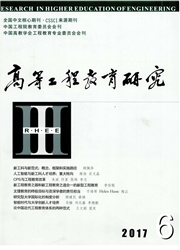

 中文摘要:
中文摘要:
草地生态系统在干旱、半干旱地区的生态稳定和陆地生态系统碳循环中扮演着重要的作用。但是,有关干旱、半干旱地区草地植被碳存量动态变化及其对气候和地形因素的响应研究却很少。本研究利用2001—2012年的气象数据、NDVI( normalized difference vegetation index )数据及改进型CASA(Carnegie Ames Stanford Approach)模型模拟估算草地植被碳存量时空动态变化及其对气候和地形因素的响应。研究结果表明:(1)甘肃省草地植被碳存量为4.4×10^14gc,年增长率为9.8×10^11gc(JP〉0.051,草地植被碳密度为136.5gcm-2。(2)草地植被碳密度和碳存量表现出较强的时空变化特征,基本与温度、降水量和太阳辐射的时空变化保持一致,且在高程2500—3500in、坡度〉30。和坡向朝东的时候达到最大值。(3)气象要素(温度、降水量和太阳辐射)对5种草地类型(沙漠和盐碱草地、典型草原、高寒草地、灌草丛和林下草地)植被碳密度的影响主要取决于在空间尺度上草地植被所能获取的水分和热量。研究结果不仅能够为合理解释草地植被碳存量动态变化的时空异质性提供新的证据,同时也能为我国干旱、半干旱地区草地农业管理提供理论和实践基础。
 英文摘要:
英文摘要:
Rangeland systems play an important role in ecological stabilization and the terrestrial carbon cycle in arid and semiarid regions. However, little is known about the vegetative carbon dynamics and climatic and topog- raphical factors that affect vegetative carbon stock in these rangelands. Our goal was to assess vegetative carbon stock by examining meteorological data in conjunction with NDVI (normalized difference vegetation index) time se- ries datasets from 2001-2012. An improved CASA (Carnegie Ames Stanford Approach) model was then applied to simulate the spatiotemporal dynamic variation of vegetative carbon stock, and analyze its response to climatic and topographical factors. We estimated the vegetative carbon stock of rangeland in Gansu province, China to be 4.4×10^14 gC, increasing linearly at an annual rate of 9.8×10^11 gC. The mean vegetative carbon density of the whole rangeland was 136.5 gC m-2. Vegetative carbon density and total carbon varied temporally and spatially and were highly associated with temperature, precipitation and solar radiation. Vegetative carbon density reached the maximal value on elevation at 2500-3500 m, a slope of 〉30°and easterly aspect. The effect of precipitation, tem- perature and solar radiation on the vegetative carbon density of five rangeland types (desert and salinized meadow, steppe, alpine meadow, shrub and tussock, and marginal grassland in the forest) depends on the acquired quantity of water and heat for rangeland plants at all spatial scales. The results of this study provide new evidence for ex- plaining spatiotemporal heterogeneity in vegetative carbon dynamics and responses to global change for rangeland vegetative carbon stock, and offer a theoretical and practical basis for grassland agriculture management in arid and semiarid regions.
 同期刊论文项目
同期刊论文项目
 同项目期刊论文
同项目期刊论文
 期刊信息
期刊信息
